
Contact
For inquiries or questions regarding Abandoned Mine Remediation & Solid Mineral Extraction, please get in touch with the Abandoned Mine Remediation & Solid Mineral Extraction team at AbandonedMine.Public@slc.ca.gov.
California is famous for its mineral wealth dating back to the discovery of gold at Sutter’s Mill in 1848. This mineral wealth resulted in the exploration and development of gold mines throughout California. In 1975, the Legislature enacted the Surface Mining and Reclamation Act (SMARA), creating a comprehensive surface mining and reclamation policy and regulation of surface mining operations to ensure that adverse environmental impacts are minimized and mined lands are reclaimed to a usable condition.
Tens of thousands of mines were abandoned before SMARA was enacted, some of which date back to before the Commission was created and before the federal government transferred certain federal lands, known as school lands, to California. While abandoned mines can pose a public safety or environmental hazard to the public and wildlife, they also provide habitat for wildlife species such as bats, owls, desert tortoises, and bighorn sheep. Abandoned mines sometimes possess historical and cultural features important to our history.
Most abandoned mines are located on public lands managed by the federal Bureau of Land Management, but some are located on private lands and state lands under the jurisdiction of various state agencies, including the Commission. In 2009, the Department of Conservation’s Division of Mine Reclamation inventoried abandoned mines on state lands which revealed that 100 school land parcels have abandoned mine features on them. Public Resources Code 6201.5 authorizes the Commission to rehabilitate abandoned mines.
Hard Mineral Extraction Leases
The Commission is authorized to grant leases providing exclusive authorization to mine and remove hard minerals. Examples of hard minerals are rock, sand, gravel, dirt, precious metals, and aggregate. These leases are typically for a term of 10 years or less. In 2022, the Legislature enacted the California Seabed Mining Protection Act, which prohibits the Commission from issuing leases for hard mineral seabed mining in tidally influenced state waters.
Last reviewed: January 7, 2025
| Lease Number | Lessee | Commodity | County | Location | Acres | Land Type | Lease Term | Issue Date |
| 5464.1 | U.S. Borax Inc. | Sodium Carbonate | Inyo | Portions of Owens Lake | 15,419 | Fee | 08/1/2018 to 07/31/2028 | August 1978 |
| 7301.2 | Hanson Aggregates Pacific Southwest, Inc. | Aggregate | San Diego | S36, T14S, R1W, SBM | 102.32 | RMI | 09/01/2022 to 08/31/2032 | July 1989 |
| 8039.2 | Western Mesquite Mines, Inc. | Precious metals | Imperial | S5 & 6, T13S, R19E, SBM | 658 | Fee | 10/01/2012 to 09/30/2032 | October 2002 |
| 8253.2 | Vulcan Lands, Inc. | Aggregate | San Bernardino | S36, T8N, R3W, SBM | 160 | RMI | 12/01/2018 to 11/30/2028 | December 2000 |
| 8831.2 | Hi-Grade Materials, Co. | Aggregate | San Bernardino | S30 & 31, T4N, R1E, SBM | 116 | Fee | 07/01/2023 to 06/30/2030 | July 2009 |
| 9451.2 | County of San Bernardino | Aggregate | San Bernardino | S36, T8N, R7E, SBM | 80 | RIM | 05/01/2018 to 04/30/2028 | May 2018 |
Typical Lease Terms:
- Bonding: performance bond plus an additional reclamation bond held separately by the county.
- Liability Insurance Coverage: combined personal liability and property damage coverage of $1 million.
- Rent: typically tied to the acreage of the lease area.
- Royalty: typically, a minimum annual royalty or 6.5 percent of gross sales (whichever is greater).
- Lease Management Fee: used to reimburse the state for costs associated with lease management.
The Abandoned Mine Remediation Program
Commission staff, in the course of its field inspection work, has noted various mine features that could pose a hazard to the public and wildlife, such as vertical mine shafts and horizontal adits. The Commission partnered with the Department of Conservation’s Division of Mine Reclamation to inventory and remediate abandoned mine features on state lands. The partnership was formalized through a Memorandum of Understanding that is effective through 2023. The Memorandum of Understanding describes the responsibility of both agencies, funding, and remediation measures to be employed.
The Abandoned Mine Remediation Process
Addressing the physical hazards associated with abandoned mines is a complex process. Remedies range from simple signage to permanent closure and are determined on a case-by-case basis depending on the severity of the public hazard. If staff determines that a mine feature is sufficiently hazardous to warrant a permanent closure, staff surveys the mine feature’s biological, historical, and physical characteristics to determine which closure technique is appropriate.
When surveys find that significant resources exist at a mine, bat gates or cupolas are built to protect the public and wildlife. Bat gates are constructed at the portal or front of horizontal mine openings, known as adits, that allow bats, owls, desert tortoises, and other wildlife to use the mine for habitat while safeguarding the public. For vertical shafts, a cupola (a box made of steel angle iron) is installed over the shaft to allow wildlife access. These techniques protect and preserve historic resources and are designed to give biologists, archeologists, or geologists survey access.
Mine shafts that are relatively shallow and have no horizontal workings generally have little historical value and provide poor wildlife habitat but may still pose a fall hazard to the public. When these shafts have the original waste rock dump adjacent to them, staff contracts for a small front-end loader to backfill the shaft using the original waste rock. When waste rock is unavailable, staff uses a polyurethane foam plug covered with native rock that protects the foam from sunlight and hides the original location.
Certain mine features may not be suitable for bat gates, cupolas, or foam plugs. In these instances, wire fences are often used, either permanently or as a temporary measure until a permanent solution is found. Cable netting is occasionally used on complex mine structures with large or irregular shaft openings that are not amenable to cupolas or foam plugs.
Commission staff consults with the California Department of Fish and Wildlife and the State Office of Historic Preservation on all closures to ensure that sensitive resources are preserved.
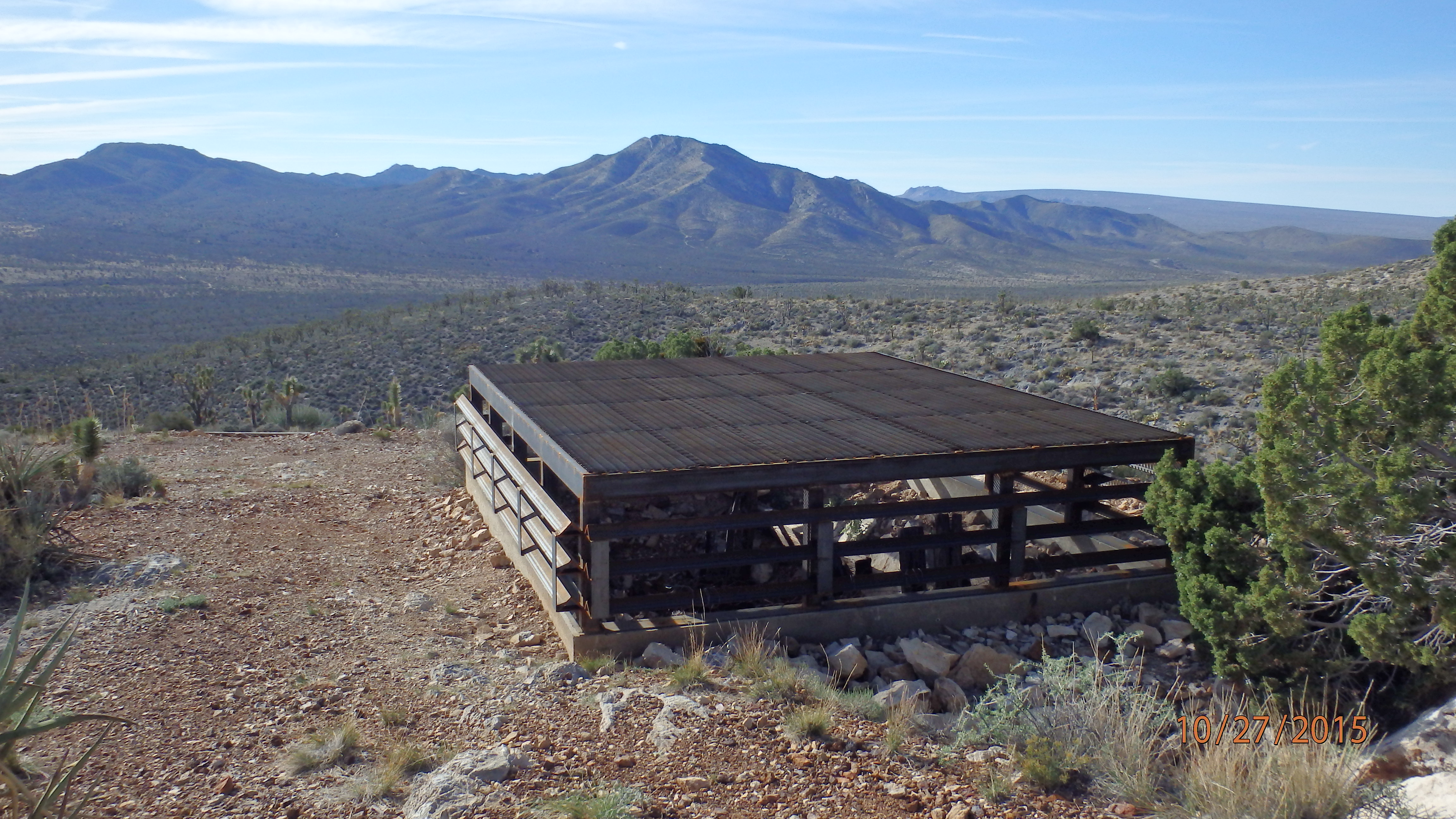
Cupolas
Cupolas are box-shaped steel structures typically constructed over a square or rectangular vertical shaft. Cupolas enable the shaft to continue to provide valuable habitat for bats, owls, birds, and other wildlife while protecting the public from falls. Cupolas, like bat gates, contain removable bars for future access.
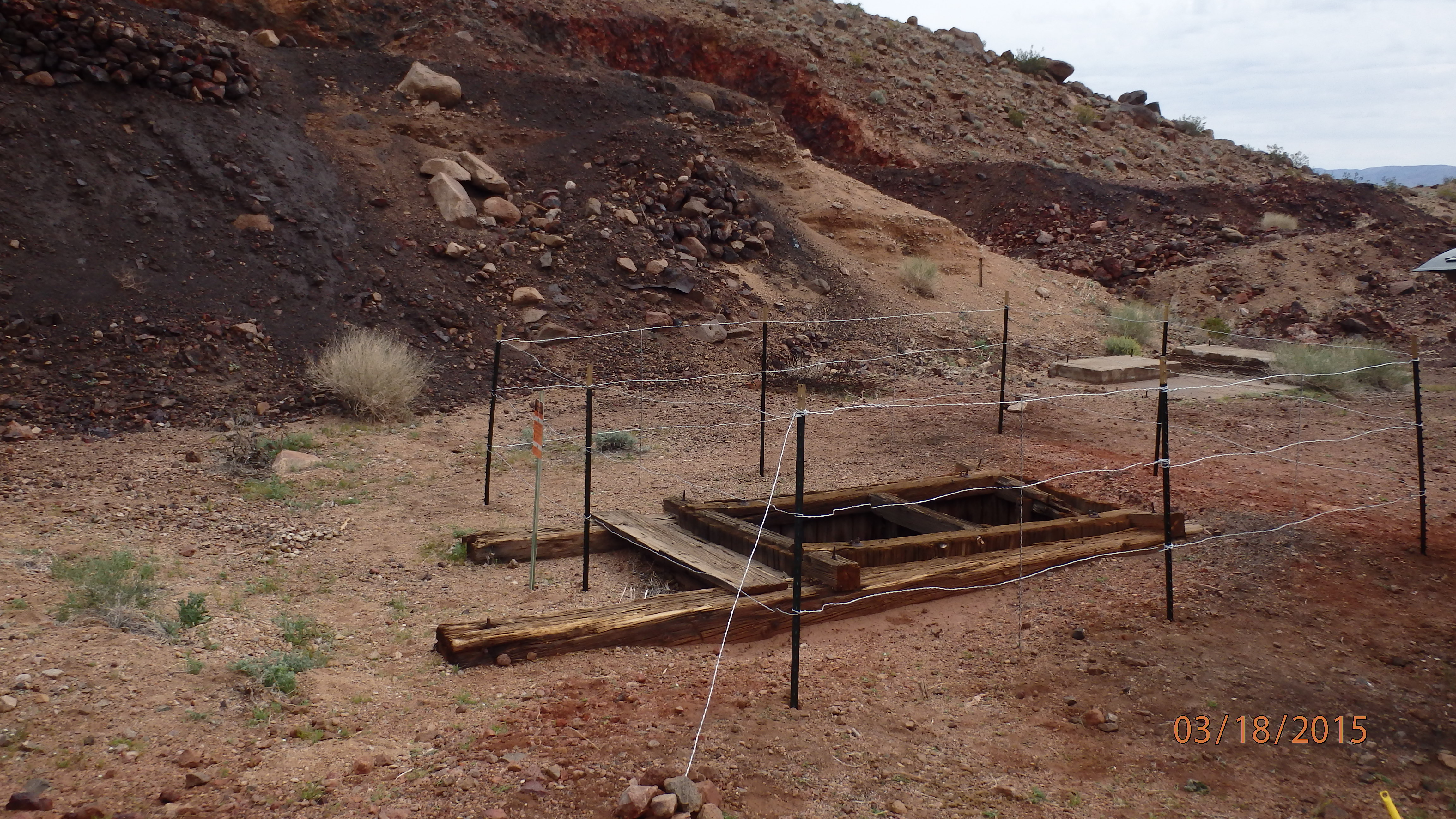
Fences
Wire fences are used as a temporary or permanent remediation measure depending on the nature and remoteness of the mine feature. They provide an initial and immediate protective measure for the public from accidental falls, while allowing continued access by animals. Cupolas require time to plan, permit, and construct. Fences are constructed with steel posts manually driven in the ground and completed with numerous strands of barbless wire.
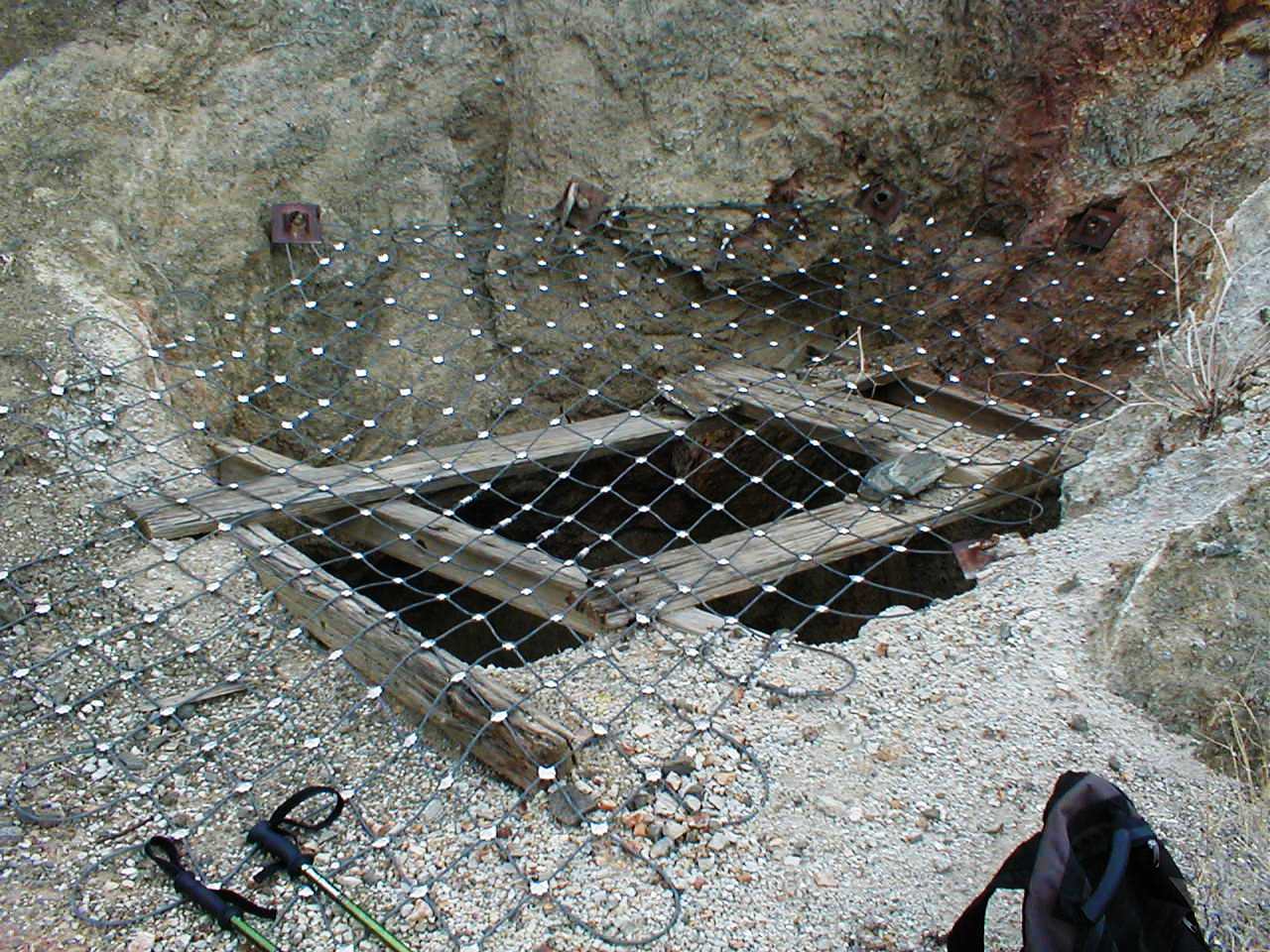
Cable Nets
Cable nets are installed over large or irregularly shaped mine features that are not appropriate for a cupola. Cable nets are anchored to surrounding bedrock with rock bolts. Cable nets provide access to bats and birds while safeguarding the public from dangerous falls.
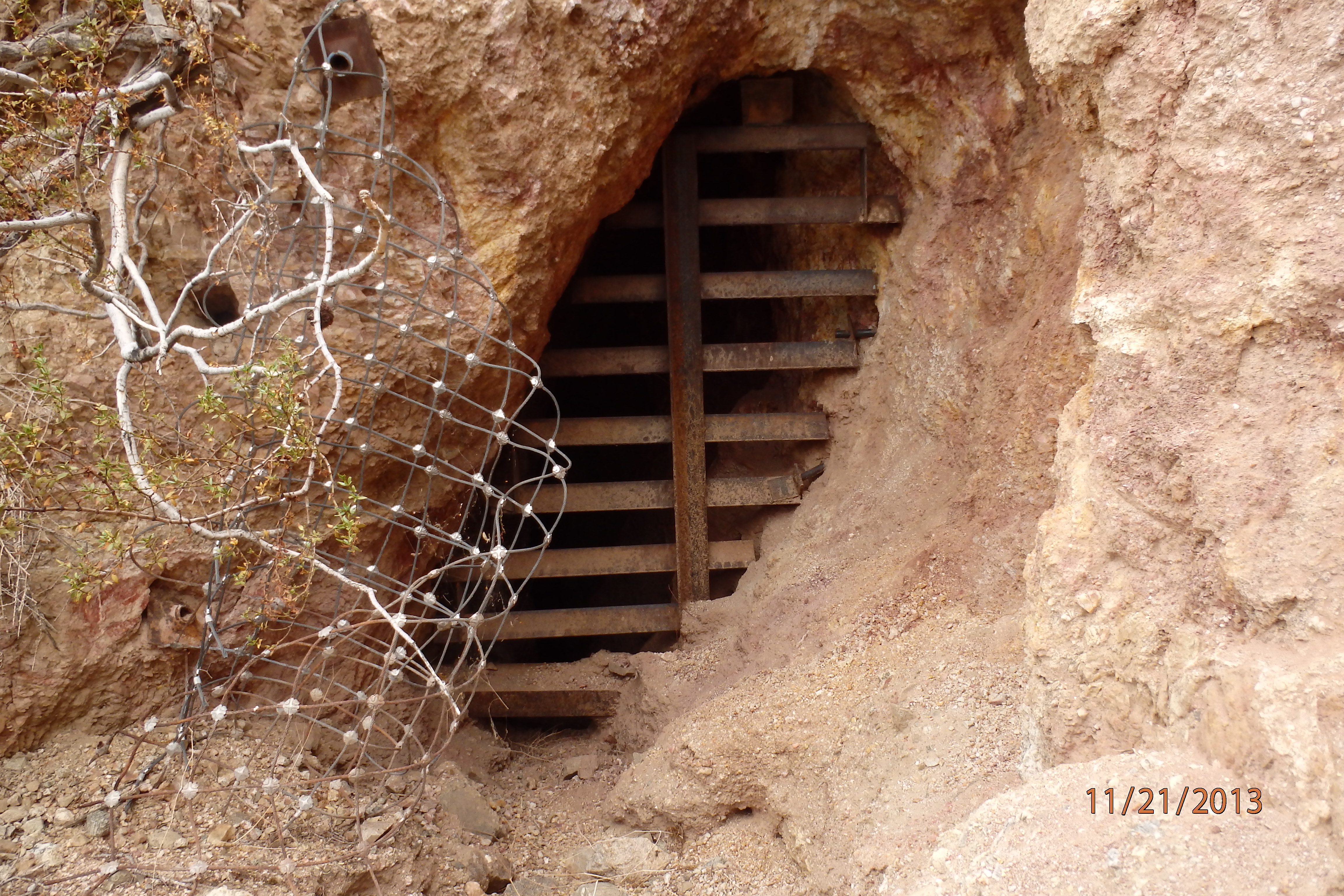
Bat Gates
Bat gates are steel structures designed and constructed to allow the continued use of wildlife such as bats, birds, desert tortoise and other animals while protecting the public from dangers such as unstable rock, falls, poisonous gases, reptiles, insects, and unstable explosives. These gates are constructed of welded angle steel installed a short distance inside the adit in competent bedrock and have a removable bar to allow biologists, archeologists and geologists continued access to assess cultural, biologic or mineral resources.
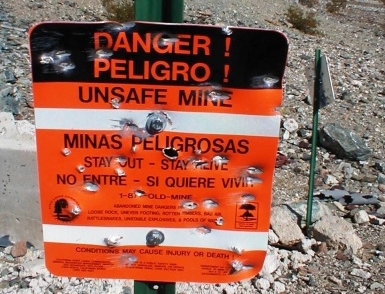
Warning Signs
Bright warning signs are installed near every substantial abandoned mine feature to provide early warning to the public of the numerous hazards that may be encountered. They are installed on signposts driven into the ground with a post pounder that sometimes must be carried great distances. Since 2002, nearly 300 warning signs have been installed. Unfortunately, theft and vandalism are not uncommon. When appropriate, warning signs are followed up with more permanent remediation measures such as bat gates, cupolas, or cable nets.

